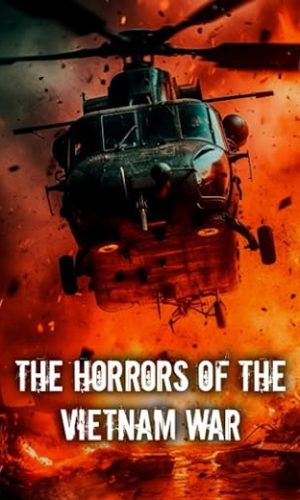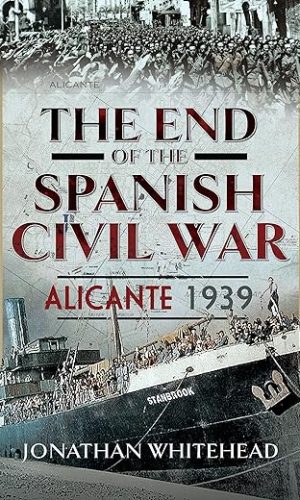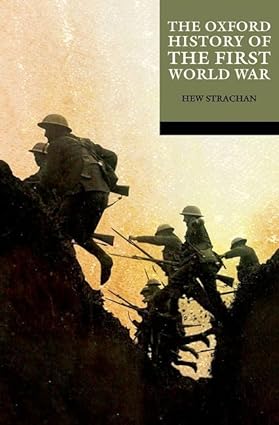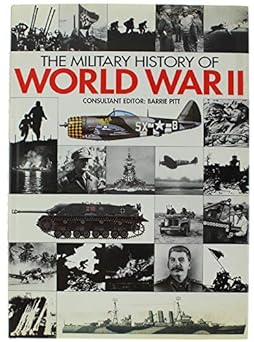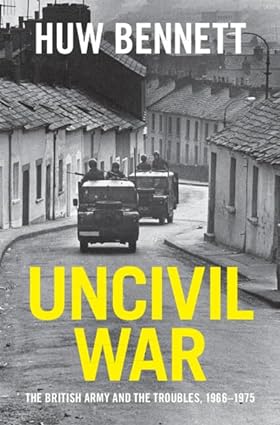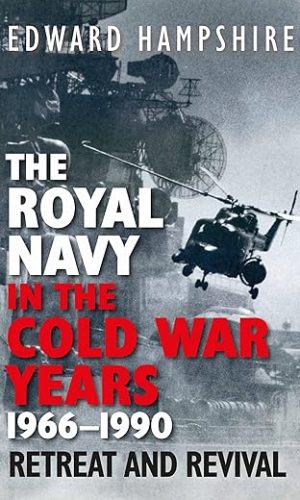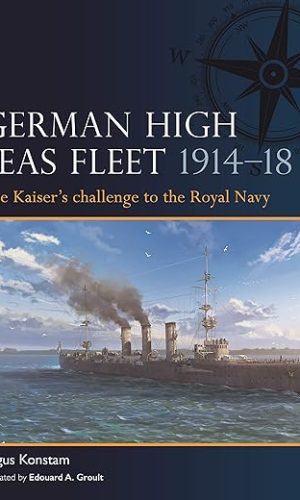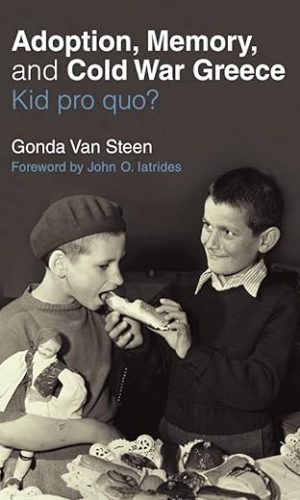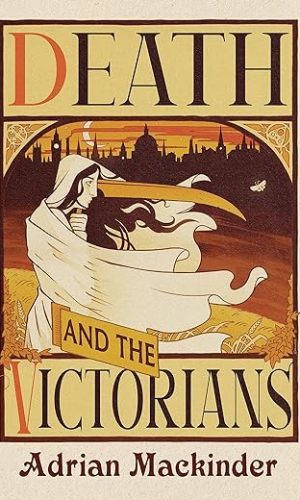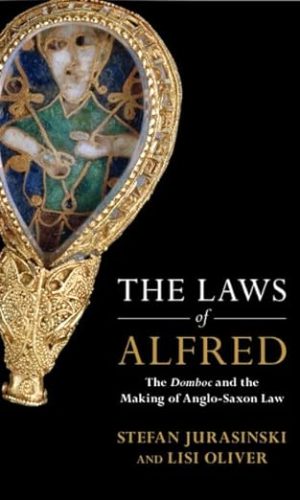-
World History For Dummies, 3rd Edition
Discover how the modern world came to be with this easy-to-follow and up-to-date history companionWant to get a taste of the entirety of human history in a single book? With World History For Dummies, you’ll get an overview of the history of, well, everything, from the Neanderthal experience to the latest historical developments of the 21st century. Re-live history from your armchair as you ride into battle alongside Roman generals, prepare Egyptian pharaohs for the afterlife, and learn from the great Greek poets and philosophers.
Written in the easy-to-digest style the For Dummies series is famous for, you’ll discover:
- How religion, philosophy, and science shaped, and were shaped by, the great figures of history
- The human consequences of warfare, from historical battles to more modern conflicts from the 20th century
- What’s influencing events in the 21st century, from climate change to new regimes and economies
World History For Dummies is the perfect gift for the lifelong learner who wants to brush up on their world history knowledge. It’s also an indispensable resource for AP World History students looking for a supplemental reference to help them with their studies.
Read more
£18.80£19.90World History For Dummies, 3rd Edition
£18.80£19.90 -
The Greatest Stories of the Old West Ever Told: True Tales and Legends of Famous Gunfighters, Outlaws and Sheriffs from the Wild West
Step back in time and immerse yourself in the rugged landscapes, daring outlaws, fearless lawmen, and untamed frontier spirit that defined an era.
Introducing The Greatest Stories of The Old West Ever Told – a captivating journey into the heart of the Wild West’s most legendary tales!
This book is a treasure trove of the Old West’s most thrilling narratives, expertly curated to bring you the very best of this iconic period in American history.
You’ll meet legendary figures like:
- George Custer, the proud and overconfident Colonel and Civil War hero who led his army into a slaughter at the hands of the Lakota chief Sitting Bull.
- Wild Bill Hickok, one of the most famous gunfighters of the Old West known for surviving gunfight after gunfight before he let his guard down and tragically lost his life in the nefarious town of Deadwood.
- Billy the Kid, the cocky young outlaw and gunfighter forced into a deadly confrontation with his best friend…and who might have gotten away.
- Wyatt Earp, the stalwart and seemingly invincible lawman who was repeatedly outgunned and outnumbered by his opponents in countless famous gunfights and yet miraculously emerged from each one completely unscathed.
- Jesse James, the former Confederate marauder and outlaw who had a knack for getting away with countless robberies all over the country, only to fall to a bullet from a member of his own gang.
- Geronimo, the fierce Apache medicine man who took up arms to seek revenge on the soldiers who brutally murdered his mother, wife, and children.
The Greatest Stories Of The Old West Ever Told is a must-read for history buffs, adventure seekers, and anyone who longs to relive the excitement and intrigue of the Wild West. Whether you’re a seasoned cowboy or a city slicker with a fascination for the frontier, this book will transport you to a time when the West was truly wild.
Don’t miss your chance to saddle up and ride alongside some of history’s most unforgettable characters. Grab your copy today and embark on an unforgettable journey through the pages of the Old West’s greatest stories!
Read more
£9.50£11.40 -
The Horrors Of The Vietnam War: Discover the Hidden Faces of Conflict and the Indelible Scars of War
The horrors of the Vietnam War: an unprecedented journey to the heart of a devastating conflictAre you passionate about history, eager to understand the events that shaped the world and their consequences? Then you’ve come to the right place! Discover “The Horrors of the Vietnam War”, a deep and shocking dive into one of the most controversial and deadly conflicts of the twentieth century. By reading this book, you will not only grasp the geopolitical stakes, but also understand the unimaginable suffering of the people, the atrocities committed and the lessons to be learned for the future.
A. Historical and geopolitical context: the origins of a multi-faceted conflict
From the very first pages, you will be immersed in the historical context of the Vietnam War. You will discover how French colonisation, the Indochina War and the Geneva Conference contributed to the emergence of this bloody conflict. In addition, you will explore the crucial role of the Cold War, the doctrine of containment and nationalist motivations in escalating tensions.B. The players in the conflict: the forces involved and their motivations
Who were the belligerents in this devastating war? You will learn all about the North Vietnamese and Vietcong forces, the South Vietnamese government, the United States and its allies, as well as the USSR and China. By understanding their motivations and objectives, you’ll be able to better grasp the reasons behind the horrors committed on the battlefield.C. Chronology of events: a war with many turning points
By following the chronology of major events step by step, you will experience the key moments of the Vietnam War, from the first American interventions to the fall of Saigon and the reunification of the country. You will witness the massive bombings, the use of chemical weapons and the atrocities committed against the civilian population.D. The human and environmental consequences: a nameless horror
The loss of human life, the destruction of property and the suffering of the people are at the heart of this book. You will discover the health and environmental after-effects of this war, in particular the impact of Agent Orange, deforestation and the loss of biodiversity. The poignant testimonies of survivors and refugees will touch your soul.E. The role of the media and public opinion: unprecedented awareness
How was the Vietnam War perceived by the whole world? You will explore the impact of the media and media coverage of the conflict, as well as the rise of opposition to the war, particularly through emblematic reports and photographs. You will understand how this awareness influenced public opinion and international demonstrations against the war.F. The lessons and legacy of the Vietnam War: a future not to be repeated
Finally, you will discover the strategic, tactical and political mistakes made during the war, as well as the political and diplomatic consequences. This book invites you to reflect on the lessons to be learned from these horrors to prevent future conflicts and the reconciliation and reconstruction efforts that followed the end of the war.Don’t miss this unique opportunity to discover “The horrors of the Vietnam War”!
By reading this book, you will be transported to the heart of one of the most significant wars in modern history, and you will come away transformed. Don’t miss this chance to immerse yourself in a captivating story, rich in detail and moving testimony. Buy “The Horrors of the Vietnam War” now and enjoy an unforgettable literary experience!Read more
£14.20 -
Japan at War in the Pacific: The Rise and Fall of the Japanese Empire in Asia: 1868-1945
“By the time of Japan’s surrender in 1945, an entire generation had grown up knowing nothing but conflict; but the transformation of Japan into a militarist power began decades earlier, with the toppling of the old samurai regime, and the rush of the formerly isolated nation onto the world stage.”Japan at War in the Pacific recounts the dramatic story of Japan’s transformation from a Samurai-led feudal society to a modern military-industrial empire in the space of a few decades―and the many wars it fought along the way. These culminated in an attempt by Japan’s military leaders to create an Asia-Pacific empire which at its greatest extent rivaled the British Empire in scope and power.
The battle for supremacy in the Pacific brought the Japanese to great heights but led ultimately to the nation’s utter devastation at the end of World War II, culminating with the dropping of atomic bombs on Hiroshima and Nagasaki―the only time such weapons have been used in warfare.
In this book, author Jonathan Clements offers fascinating insights into:
- The wars that Japan fought during its rise to supremacy in the western Pacific, including the Russo-Japanese War, the seizure of Manchuria and war in China, and the Pacific theater of World War II.
- The many military actions undertaken by Imperial Japanese forces including the horrific “Rape of Nanjing,” the surprise attack on Pearl Harbor, the decisive defeat at the Battle of Midway, the savage Battles of Okinawa and Iwo Jima, and many more.
- The motivations and beliefs of Japan’s leaders, as well as the policy decisions of a government dedicated to expansion which ultimately led to a complete dismantling of the nation’s political and social order during the Allied Occupation.
- With over 75 photographs and maps, this book vividly recounts the amazing story of Japan’s military conquests. Clements charts the evolution of the Japanese empire in the Pacific and the influence of a ruthless military-led government on everything from culture and food to fashion and education―including the anthems and rallying calls of a martial nation which were silenced long ago but continue to echo in Asian politics.
Read more
£13.70£17.10 -
The Napoleonic Wars (1805 – 1815)
The Napoleonic Wars (1805 – 1815) were an epoch of unprecedented upheaval and destruction that reshaped the landscape of the history of ancient France and the broader European continent. In this comprehensive book, we embark on a captivating journey through this tumultuous decade, offering a detailed exploration of the triumphs and tragedies that marked Napoleon Bonaparte’s reign as the self-crowned Emperor of the French.
From the brilliance of Napoleon’s early victories, including his masterpiece at Austerlitz in 1805 and the smashing of Prussia at Jena in 1806, to the catastrophic invasion of Russia in 1812 and the bloodiest day at Borodino, we traverse the peaks and valleys of his fortunes. This narrative takes us through the horrors of the French occupation of Spain and Portugal, the great struggles of 1813, and Napoleon’s doomed defense of Paris in 1814. Along this historical voyage, we encounter moments of military genius and fatal blunders that left an indelible mark on the history of ancient France.
The climax of this narrative occurs in 1815, where we bear witness to history’s most renowned generals meeting on the battlefield for the first and only time: Napoleon Bonaparte, Emperor of the French, and the Duke of Wellington. The epic and brutal Battle of Waterloo unfolds, ultimately determining the fate of Europe.
This book provides a comprehensive chronicle of the entire span of the Napoleonic Wars, from the zenith of Napoleon’s power in 1805 to his final defeat at Waterloo in 1815. It is a compelling journey through one of the most captivating and tumultuous periods in history, interwoven with the grand campaigns, dramatic battles, and the rise and fall of an extraordinary leader, all set against the backdrop of the history of ancient France.
Order your copy now!
Read more
£4.70 -
The Hundred Years War: 1337–1453 (Essential Histories)
An illustrated overview of the Hundred Years War, the longest-running and the most significant conflict in western Europe in the later Middle Ages.There can be no doubt that military conflict between France and England dominated European history in the 14th and 15th centuries. The Hundred Years War is of considerable interest both because of its duration and the number of theatres in which it was fought.
Drawing on the latest research for this new edition, Hundred Years War expert Professor Anne Curry examines how the war can reveal much about the changing nature of warfare: the rise of infantry and the demise of the knight; the impact of increased use of gunpowder and the effect of the war on generations of people.
Updated and revised for the new edition, with full-colour maps and 50 new images, this illustrated introduction provides an important reference resource for the academic or student reader as well as those with a general interest in late medieval warfare.
Read more
£9.50£12.30 -
The End of the Spanish Civil War: Alicante 1939
The Spanish Civil War ended in Alicante. After Catalonia fell to the Hitler and Mussolini backed military rebellion of Franco’s Nationalists at the outset of 1939, the legitimate Republican government of Dr Negrín was faced with a choice between apparently futile resistance or unconditional surrender to the triumphant Nationalists. Choosing the path of continued defiance until they could force concessions or at least implement a mass evacuation of those Republicans most at risk in Franco’s new Spain, the government withdrew to Elda in the province of Alicante. However, their plans were thwarted by a new rebellion of Republican officers, led by Colonel Segismundo Casado, who resented Negrín’s reliance on the Communist Party and the USSR and believed themselves better equipped to negotiate a peace settlement with Franco. They were misguided, Franco had no wish, and ultimately no need to negotiate. Meanwhile, faced with the imminent risk of arrest by the new junta, the Prime Minister and his cabinet were forced to abandon Spain from the tiny aerodrome of Monóvar. A relatively quiet port on the eastern, Mediterranean coast of Spain, Alicante had remained at some distance from the frontlines throughout the fighting on the ground, but swiftly became a target for Italian bombers operating out of bases in the Balearic Islands. In May 1938, at the height of the air offensive, Italian bombers attacked the marketplace, causing a massacre as tragic as the events in Guernica, yet largely ignored by historians. As the war drew towards its conclusion, Alicante became increasingly significant as attention focused on the plight of the defeated Republicans. In the second half of March 1939, the fronts collapsed, and Madrid finally fell to the insurgents. Tens of thousands of refugees descended on Alicante in the forlorn hope of rescue by French and British ships that had been promised but which failed to materialise. Amid the tragedy, as the British and French governments declined to engage in any humanitarian intervention that might offend Hitler and Mussolini, a single hero emerged; Captain Archibald Dickson, the Welsh master of the Stanbrook who ditched his cargo and transported 3,000 refugees to safety in North Africa. On 30 March 1939, Franco’s vanguard, the Italian ‘Volunteer’ Corps under General Gastone Gambara, occupied a town already under the control of the Fifth Column. Two days later the Generalísimo issued a communiqué from his headquarters in Burgos, declaring that the war was over. The bulk of the Republicans surrounded and captured in the port were marched to an improvised internment camp, known as the Campo de los Almendros (Field of Almond Trees). They were then transferred to the infamous concentration camp at Albatera to share the fate of defeated Republicans across Spain and to undergo the programme of ideological cleansing of the new fascist authorities.Read more
£20.00£23.80The End of the Spanish Civil War: Alicante 1939
£20.00£23.80 -
Afterlives of War: A Descendants’ History (Cultural History of Modern War)
Afterlives of war documents the lives and historical pursuits of the generations who grew up in Australia, Britain and Germany after the First World War. Although they were not direct witnesses to the conflict, they experienced its effects from their earliest years. Based on ninety oral history interviews and observation during the First World War Centenary, this pioneering study reveals the contribution of descendants to the contemporary memory of the First World War, and the intimate personal legacies of the conflict that animate their history-making.Read more
£23.80 -
Wales in World War 2: Wales in World War II
The most comprehensive study to date of Wales’ role in the British response to World War II, and the impact of the war on Wales itself. Wales was vital to the war effort, from military training to public entertainment, from hosting several of Britain’s most secretive weapons programs to housing 110,000 child evacuees, from the war economy to food security. The devastating 1940 blitz in the cities of the south is well known, but the book covers every region comprehensively. Politicians, civil servants and civilian volunteers; miners, steelworkers, farmers, factory workers and entertainers; local children, host families and evacuees; new recruits, soldiers, prisoners of war and pacifists – the book looks at the experience of every part of the population present in Wales during the war. Long-standing tensions between the Welsh people and the English authorities meant for a sometimes strained relationship, affecting the role of film, radio and the arts in propaganda directed to audiences in the home. The book also looks at the legacy of the conflict on Wales after the war.A well-researched, well-written account and analysis drawing on a wide range of sources. It provides international context but also the experiences of regions, communities and individuals. A major advance in writing on this still rather neglected topic. – Dr Neil Evans, Honorary Research Fellow, Bangor University
World War II was a defining moment in the history and the lives of many Welsh people. Yet it has been relatively neglected by historians of Wales. This book sets out to correct that omission with a well-researched account of a war that changed the very course of the history of the nation. – Professor Martin Johnes, Dept of History, Heritage and Classics, Swansea University
Comprehensively researched, with an eloquent yet easy-to-read narrative, this book is highly recommended for anyone wishing to learn about a neglected piece of twentieth-century history: the experiences of World War 2 in Wales. – Kate Sullivan, Project Coordinator, ‘People’s Voices in a People’s War: Aberystwyth, 1938-1945
Read more
£13.50£14.20Wales in World War 2: Wales in World War II
£13.50£14.20 -
GCSE Edexcel History Superpower relations and the Cold War, 1941–1991: Illustrated Revision and Practice (ClearRevise Edexcel GCSE History 1HI0)
Subject level: GCSE History
Exam board: Edexcel
A new generation of revision guides – from the experts at ClearRevise!
Do images help you learn?
This illustrated revision guide is perfectly matched to the GCSE Edexcel History 1HI0 Superpower relations and the Cold War specification.
Our content is expertly compiled by outstanding teachers, industry professionals and highly experienced examiners. All the key points have been clearly explained in PG Online’s signature style, and there are plenty of practice questions to check the content has really stuck. Even better, each page has been beautifully designed, so it even looks good too! It’s everything you need to be fully prepared ahead of the exam.
PG Online are multi-award-winning specialists with decades of teaching, examining and design experience.
Features:
- Over 200 marks worth of exam-style questions
- Answers provided for all questions with mark allocations
- Illustrated topics to improve memory and recall
- Specification references for every topic
- Handy, lightweight, book-bag size
- Examination tips and techniques
Read more
£5.70 -
Connecting History: National 4 & 5 The Wars of Independence, 1286–1328
Exam board: SQA
Level: National 4 & 5
Subject: History
First teaching: September 2017
First assessment: Summer 2018Fresh stories, fresh scholarship and a fresh structure. Connecting History informs and empowers tomorrow’s citizens, today.
Bringing together lesser-told narratives, academic excellence, accessibility and a sharp focus on assessment success, this series provides a rich, relevant and representative History curriculum.
> Connect the past to the present. Overarching themes of social justice, equality, change and power help students to understand the importance of events and issues, then and now.
> Go far beyond other resources. With respect and aspiration for the transformative power of History, this series incorporates the latest research, challenges old interpretations and embeds diverse experiences throughout.
> Follow a clear and consistent structure. The key issues in the N5 specification form the chapters in each book, and the content descriptors are subheadings within the chapters. Finding the information that you need has never been easier.
> Meet the demands of the assessments. Connecting History develops the knowledge and skills for success, with appropriate breadth, depth and pace. The narrative and sources take centre stage and the authors model the process of answering questions effectively through that narrative, ensuring that students know all the key points that they need to. Activities throughout each chapter consolidate and extend learning.
> Benefit from pedagogic and academic expertise. The authors are highly experienced teachers and examiners who know how to spark critical curiosity in students. Each book has been rigorously reviewed by an academic from the University of Glasgow, so you can rest assured that the content is accurate and up to date.
Read more
£16.10 -
World War Two: 500 Interesting Facts About Major Events, Battles, and People (Curious Histories Collection)
Uncover the fascinating history of World War Two with 500 interesting facts!From the invasion of Poland to V-J Day, this book is your definitive guide to understanding this historical event. Gain insight into pivotal battles, such as Pearl Harbor, Midway, and Stalingrad. Learn about the weapons and technologies used in the battles and discover how women played a significant role during wartime. Unearth meaningful resistance movements and explore the legacies of WWII.
You are in for an exciting ride, so buckle in!
Delve deep into history with chapters including:
- The outbreak of WWII
- Battle of Britain
- Attack on Pearl Harbor
- Battle of Stalingrad
- Japanese American Internment
- And so much more!
This book is a must-have for anyone looking to gain an in-depth understanding of one of history’s most defining moments. Get your copy today, and explore 500 interesting facts about World War Two!
Read more
£8.90 -
The Hundred Years War on Palestine By Rashid Khalidi & Enemies and Neighbours Arabs and Jews in Palestine and Israel By Ian Black 2 Books Collection Set
Please Note That The Following Individual Books As Per Original ISBN and Cover Image In this Listing shall be Dispatched Collectively:The Hundred Years War on Palestine By Rashid Khalidi & Enemies and Neighbours Arabs and Jews in Palestine and Israel By Ian Black 2 Books Collection Set:
The Hundred Years’ War on Palestine:
ISBN-10 : 1781259348
ISBN-13 : 978-1781259344
The twentieth century for Palestine and the Palestinians has been a century of denial: denial of statehood, denial of nationhood and denial of history. The Hundred Years War on Palestine is Rashid Khalidi’s powerful response. Drawing on his family archives, he reclaims the fundamental right of any people: to narrate their history on their own terms.Beginning in the final days of the Ottoman Empire, Khalidi reveals nascent Palestinian nationalism and the broad recognition by the early Zionists of the colonial nature of their project.Enemies and Neighbours Arabs and Jews in Palestine and Israel:
ISBN-10 : 0141979143
ISBN-13 : 978-0141979144
Drawing on a wide range of sources – from declassified documents to oral testimonies and his own decades of reporting – Enemies and Neighbours brings much-needed perspective and balance to the long and unresolved struggle between Arabs and Jews in the Holy Land. Beginning in the final years of Ottoman ruleand the British Mandate period, when Zionist immigration transformed Palestine in the face of mounting Arab opposition, the book re-examines the origins of what was a doomed relationship from the start. It sheds fresh light on critical events such as the Arab rebellion of the 1930s; Israel’s independence and the Palestinian catastrophe (Nakba in Arabic) of 1948; the watershed of the 1967 war; two Intifadas; the Oslo Accords and Israel’s shift to the right.Read more
£25.60£26.60 -
The Peloponnesian War
The Peloponnesian War by Thucydides is a timeless classic that has shaped the way we understand the past and the present. It is one of the earliest surviving works of history and a key source of information about the Peloponnesian War, which lasted from 431 to 404 BC. Thucydides was an Athenian general who witnessed the war firsthand and meticulously documented the events as they unfolded. In his work, he offers a fascinating account of the war from both sides, including detailed descriptions of battles, speeches and strategy. He even goes beyond the war’s military aspects, examining its social, economic and political ramifications. Ultimately, The Peloponnesian War serves as an invaluable record of a pivotal event in ancient Greek history and a timeless lesson on the power of human ambition. It has been studied and admired by scholars and students of history for centuries, and its insights remain relevant to this day. This edition utilizes the 1874 translation by Welsh academic Richard Crawley (1840-1893).Thucydides (c. 460 BC–c. 395 BC) was an Athenian historian and general whose work, History of the Peloponnesian War, is widely considered one of the most influential works of history in the Western tradition. Thucydides recounts the conflict between Sparta and Athens in the 5th century BC, and his account is noted for its level of detail and unbiased depiction of the events. His writing style is characterized by a combination of narrative and analysis, which has made his work the subject of much scholarly debate. As a historian, Thucydides was the first to document the causes and effects of the Peloponnesian War. He was also the first to use speeches and documents to explain events in a narrative form. His work provides insight into the politics and culture of ancient Greece, as well as the origins of democracy and war. Thucydides also wrote a brief autobiography, which offers insight into his life and his motivations for writing the History of the Peloponnesian War. In addition to his writing, Thucydides was an active participant in the Peloponnesian War itself. He served as an Athenian general and was involved in the siege of Amphipolis. He was subsequently exiled from Athens for his role in the failed expedition. Thucydides also had a long and distinguished military career, serving in several campaigns and as an advisor to the Athenian government. The legacy of Thucydides has endured for centuries. His work is still widely read and studied, and his analysis of the Peloponnesian War is the basis of much of our understanding of the period. Thucydides is considered one of the most influential historians of all time, and his work is essential reading for those interested in the history of Greece and the ancient world.
Read more
£11.60The Peloponnesian War
£11.60 -
Connecting History: National 4 & 5 The Era of the Great War, 1900–1928
Exam board: SQA
Level: National 4 & 5
Subject: History
First teaching: September 2017
First assessment: Summer 2018Fresh stories, fresh scholarship and a fresh structure. Connecting History informs and empowers tomorrow’s citizens, today.
Bringing together lesser-told narratives, academic excellence, accessibility and a sharp focus on assessment success, this series provides a rich, relevant and representative History curriculum.
> Connect the past to the present. Overarching themes of social justice, equality, change and power help students to understand the importance of events and issues, then and now.
> Go far beyond other resources. With respect and aspiration for the transformative power of History, this series incorporates the latest research, challenges old interpretations and embeds diverse experiences throughout.
> Follow a clear and consistent structure. The key issues in the N5 specification form the chapters in each book, and the content descriptors are subheadings within the chapters. Finding the information that you need has never been easier.
> Meet the demands of the assessments. Connecting History develops the knowledge and skills for success, with appropriate breadth, depth and pace. The narrative and sources take centre stage and the authors model the process of answering questions effectively through that narrative, ensuring that students know all the key points that they need to. Activities throughout each chapter consolidate and extend learning.
> Benefit from pedagogic and academic expertise. The authors are highly experienced teachers and examiners who know how to spark critical curiosity in students. Each book has been rigorously reviewed by an academic from the University of Glasgow, so you can rest assured that the content is accurate and up to date.
Read more
£16.10 -
The Oxford History of the First World War
bHistories you can trust./bThe First World War, now a century ago, still shapes the world in which we live, and its legacy lives on, in poetry, in prose, in collective memory and political culture. By the time the war ended in 1918, millions lay dead. Three major empires lay shattered by defeat, those of Germany, Austria-Hungary, and the Ottomans. A fourth, Russia, was in the throes of a revolution that helped define the rest of the twentieth century.
The Oxford History of the First World War brings together in one volume many of the most distinguished historians of the conflict, in an account that matches the scale of the events. From its causes to its consequences, from the Western Front to the Eastern, from the strategy of the politicians to the tactics of the generals, they chart the course of the war and assess its profound political and human consequences. Chapters on economic mobilization, the impact on women, the role of propaganda, and the rise of socialism establish the wider context of the fighting at sea and in the air, and which ranged on land from the trenches of Flanders to the mountains of the Balkans and the deserts of the Middle East.
Read more
£11.20£12.30The Oxford History of the First World War
£11.20£12.30 -
The Military History of World War II
Traces the origins and course of World War II across the globe, from the invasion of Poland to the destruction of Hiroshima. The book includes numerous contemporary photographs, as well as features and maps on particular aspects of the conflict and the military hardware used by both sides.Read more
£0.40 -
Uncivil War: The British Army and the Troubles, 1966–1975 (Cambridge Military Histories)
When Operation Banner was launched in 1969 civil war threatened to break out in Northern Ireland and spread over the Irish Sea. Uncivil War reveals the full story of how the British army acted to save Great Britain from disaster during the most violent phase of the Troubles but, in so doing, condemned the people of Northern Ireland to protracted, grinding conflict. Huw Bennett shows how the army’s ambivalent response to loyalist violence undermined the prospects for peace and heightened Catholic distrust in the state. British strategy consistently underestimated community defence as a reason for people joining or supporting the IRA whilst senior commanders allowed the army to turn in on itself, hardening soldiers to the suffering of ordinary people. By 1975 military strategists considered the conflict unresolvable: the army could not convince Catholics or Protestants that it was there to protect them and settled instead for an unending war.Read more
£19.00£23.80 -
Forgotten War: The British Empire and Commonwealth’s Epic Struggle Against Imperial Japan, 1941–1945
The monumental struggle fought against Imperial Japan in the Asia/Pacific theater during World War II is primarily viewed as an American affair. While the United States did play a dominant role, the British and Commonwealth forces also made major contributions – on land, at sea and in the air – eventually involving over a million men and vast armadas of ships and aircraft. It was a difficult and often desperate conflict fought against a skilled and ruthless enemy that initially saw the British suffer the worst series of defeats ever to befall their armed forces. Still, the British persevered and slowly turned the tables on their Japanese antagonists. Fighting over an immense area that stretched from India in the west to the Solomon Islands in the east and Australia in the south to the waters off Japan in the north, British and Commonwealth forces eventually scored a string of stirring victories that avenged their earlier defeats and helped facilitate the demise of the Japanese Empire.Often overlooked by history, this substantial war effort is fully explored in Forgotten War. Meticulously researched, the book provides a complete, balanced and detailed account of the role that British and Commonwealth forces played on land, sea and in the air during this crucial struggle. It also provides unique analysis regarding the effectiveness and relevance of this collective effort and the contributions it made to the overall Allied victory.
Read more
£20.10£23.80 -
The German Invasions of France during the World Wars: The History of Germany’s Campaigns in World War I and World War II
World War I, also known in its time as the “Great War” or the “War to End all Wars”, was an unprecedented holocaust in terms of its sheer scale. Fought by men who hailed from all corners of the globe, it saw millions of soldiers do battle in brutal assaults of attrition which dragged on for months with little to no respite. Tens of millions of artillery shells and untold hundreds of millions of rifle and machine gun bullets were fired in a conflict that demonstrated man’s capacity to kill each other on a heretofore unprecedented scale, and as always, such a war brought about technological innovation at a rate that made the boom of the Industrial Revolution seem stagnant. The enduring image of World War I is of men stuck in muddy trenches, and of vast armies deadlocked in a fight neither could win. It was a war of barbed wire, poison gas, and horrific losses as officers led their troops on mass charges across No Man’s Land and into a hail of bullets.If trench warfare was an inevitability during the war, it is only because the events leading up to the First Battle of the Marne were quite different. The armies at the beginning of the war moved quickly through the land, but the First Battle of the Marne devolved into a bloody pitched battle that led to the construction of trenches after the Germans retreated, blocked in their pursuit of Paris. When the aftermath disintegrated into a war between trenches, some Germans thought they had the upper hand since they were occupying French territory, but with fewer soldiers than the combined Allied nations and fewer resources and supplies, it was possibly only a matter of time before they were ultimately defeated. The commander of the German armies, General Helmuth von Moltke, allegedly said to Kaiser Wilhelm II immediately after the First Battle of the Marne, “Your Majesty, we have lost the war.” Winston Churchill himself would later reference that anecdote, writing, “Whether General von Moltke actually said to the Emperor, ‘Majesty, we have lost the war,’ we do not know. We know anyhow that with a prescience greater in political than in military affairs, he wrote to his wife on the night of the 9th, ‘Things have not gone well. The fighting east of Paris has not gone in our favour, and we shall have to pay for the damage we have done.’”
One of the most famous people in the world came to tour the city of Paris for the first time on June 28, 1940. Over the next three hours, he rode through the city’s streets, stopping to tour L’Opéra Paris. He rode down the Champs-Élysées toward the Trocadero and the Eiffel Tower, where he had his picture taken. After passing through the Arc de Triomphe, he toured the Pantheon and old medieval churches, though he did not manage to see the Louvre or the Palace of Justice. Heading back to the airport, he told his staff, “It was the dream of my life to be permitted to see Paris. I cannot say how happy I am to have that dream fulfilled today.” Four years after his tour, Adolf Hitler would order the city’s garrison commander, General Dietrich von Choltitz, to destroy Paris, warning his subordinate that the city “must not fall into the enemy’s hand except lying in complete debris.”
Of course, Paris was not destroyed before the Allies liberated it, but it would take more than four years for them to wrest control of France from Nazi Germany after they took the country by storm in about a month in 1940. That said, it’s widely overlooked today given how history played out that as the power of Nazi Germany grew alarmingly during the 1930s, the French sought means to defend their territory against the rising menace of the Thousand-Year Reich. As architects of the most punitive measures in the Treaty of Versailles following World War I, France was a natural target for Teutonic retribution, so the Maginot Line, a series of interconnected strongpoints and fortifications running along much of France’s eastern border.
Read more
£4.70 -
Liberation of Nazi Concentration Camps (Images of War)
As the Allies closed in on Hitler’s Germany the horror and scale of the Final Solution and concentration camps became all too apparent. This latest Images of War book provides the reader a truly disturbing insight into the Nazi’s brutal regime of wholesale murder, torture and starvation. While the Germans attempted to hide the evidence by demolishing much of the camps’ infrastructure, the pace of the Soviets’ advance through Poland meant that the gas chambers at Majdenak near Lublin were captured intact. Auschwitz had received over a million deportees yet when liberated in January 1945 only a few thousand prisoners were there as the vast majority of surviving prisoners had been sent on forced death marches to more westerly camps such as Ravensbruch and Buchenwald. Condition in these camps deteriorated further due to overcrowding and the spread of deadly diseases. In every camp shocking scenes of death and starvation were encountered. When British troops reached Bergen-Belsen in April 1945, there were some 10,000 unburied dead in addition to the mass graves, in addition to 60,000 starving and sick inmates in utterly appalling conditions. The words and images in this disturbing book are a timely reminder of man’s inhumanity to his fellows and that such behaviour should never be repeated.Read more
£11.60£14.20 -
The Armchair General World War One: Can You Win The Great War? (The Armchair General, 2)
‘The Armchair General team has done it again. An absorbing read for Christmas.’
Peter Caddick-Adams‘Brilliant and immersive.’
Harry SidebottomThe second book in the Armchair General series, where YOU choose the fate of the First World War
________________________________
HISTORY IS WRITTEN BY THE VICTORS. WILL IT BE YOU?
TAKE THE HOTSEAT
Assume the role of real historic decision-makers: general, leaders, soldiers and intelligence officers of the Allied Forces during World War I.EXAMINE THE INTELLIGENCE
Explore eight key moments from the First World War, using real contemporaneous intelligence: including the July Crisis, the Battle of the Somme, and the Russian Revolution.CONSIDER THE SCENARIO & MAKE YOUR DECISION
From battlefields to the Royal Courts, each tactical and strategic decision you make leads to a different outcome.Will you follow the path of the past – or shape a new history…?
________________________________PRAISE FOR THE ARMCHAIR GENERAL SERIES
‘An original and exciting approach…The Armchair General adds enormously to our understanding of the conflicts’ JAMES HOLLAND
‘A reminder that history is a never ending now, a relentless and endless present that comes without the luxury of hindsight’ AL MURRAY
‘Wonderfully original…putting readers at the heart of the decision-making process and allowing them, literally, to change the course of history. This is counterfactual history at its very best’ SAUL DAVID
Read more
£9.50£18.00 -
The Factory that Became a Village: The History of the Royal Small Arms Factory at Enfield Lock (Lea Valley Series)
When Jim Lewis met the directors of the RSA Trust, the charity responsible for the concept and the running of Enfield Island Village, in January 2015, it was to discuss the commissioning of a book that would tell the story of the former government controlled Royal Small Arms Factory (RSAF) after privatisation and closure in 1987. However, during discussions it soon became clear, with the impending two-hundredth anniversary of the birth of the Enfield Lock armoury, that a unique opportunity existed to link the story of the RSAF site with the founding of the RSA Trust. And as one Trust director put it, this is the classic story of from swords into ploughshares. Surprising as it may seem, the story of the birth of the Enfield Lock armoury in 1816 and the methods of manufacture that then existed within the British small arms industry has never been completely told.
At the time of writing this book the author wanted, in the two-hundredth anniversary year of the founding of the RSAF, to commemorate the contribution made to our armed forces by the former workforce which, by their skills and dedication, helped keep Britain safe during times of world instability. Also I wanted to acknowledge the contribution made to our community by the four founding fathers of the RSA Trust that has benefited so many worthwhile good causes.
In a world full of increasingly depressing news it is uplifting to have the opportunity to write about a group of four local businessmen who had the vision, courage and tenacity to take on the mammoth task of rescuing a Grade II listed building that no sane entrepreneur would have contemplated taking on and turn it into a vibrant sustainable business for the benefit of the local community. The model created pays a service charge into a limited liability company, RSA IV, which in turn transfers the surplus to the not-for-profit RSA Trust which is then able to fund many community good causes.
Read more
£11.80£17.10 -
The Royal Navy and Fishery Protection: From the Fourteenth Century to the Present
From the first recorded mention of British ships protecting of fishing vessels in the late fourteenth century through to recent controversies over the change in emphasis to border patrols and overseas deployments, the story of the Royal Navy’s ‘Cinderella Fleet’ involves many dramatic incidents; until now, however, there has never been a book dedicated to the subject. Naval historian Jon Wise’s new work will rectify this omission. Historically there have been two main reasons why protecting fishing vessels was so important: first, fish have always constituted an essential part of the nation’s diet while, secondly, fishermen have been an important source of skilled personnel for the Royal Navy itself. It is claimed that the Fishery Protection Squadron (FPS) is the oldest in the fleet, pre-dating the formal creation of the Navy itself in the early part of the sixteenth century, yet it still remains comparatively little-known. The Squadron’s most famous operations were the ‘Cod Wars’ of 1958–76, but for six centuries it has been engaged in the many important tasks of protection and policing of fishing fleets, though more recently it has turned its attention to patrolling oil and gas fields, overseeing quotas and sustainability, and policing the ongoing disagreements over who can fish where and when. The author covers subjects as diverse as the battles with the Dutch for dominance in the North Sea, the protection of fishing on the eastern seaboard of America, and the role of the Squadron in the two World Wars. Containing many first-hand accounts, this thought-provoking narrative will be of particular interest to all those RN personnel who have served in the Squadron, and is set to become the definitive account of this vital but often unsung component of Britain’s naval forces, and its impact on national life.Read more
£20.00£23.80 -
The Royal Navy in the Cold War Years, 1966-1990: Retreat and Revival
The Royal Navy in the Cold War Years, 1966-1990: Retreat and Revival is the first book to cover this subject in depth for more than thirty years. With unique access to primary, archival sources, Edward Hampshire offers important and fascinating insights into the naval dimension of the Cold War.During the period covered by this new book the Royal Navy faced some of its greatest challenges, both at sea confronting the increasingly capable and impressive Soviet Navy, and on shore when it faced policy crises that threatened the survival of much of the fleet. During this remarkable period, the Navy had rarely been so focused on a single theater of war-the Eastern Atlantic-but also rarely so politically vulnerable.
The author sets out to analyze shadowing operations and confrontations at sea with Soviet ships and submarines; the Navy’s role in the enormous NATO and Warsaw Pact naval exercises that acted out potential war scenarios; individual operations from the Falklands and the 1990-91 Gulf War to the Beira and Armilla patrols; the development of advanced naval technologies to counter Soviet capabilities; policy-making controversies as the three services fought for resources-including the controversial 1981 Nott defense review; and what life was like in the Cold War navy for ratings and officers. The book, the first to cover this subject in depth for more than thirty years, will make use of the full range of archival sources that have been publicly available over the last two decades, but of which little use has been made by historians.
This work is destined to become a definitive naval history of the period. It also provides a fascinating and gripping narrative of a navy under threat from many directions but which survived and eventually prospered, winning a remarkable victory in the far South Atlantic more than seven thousand from its expected battleground in the North Atlantic. Written for a wide audience, this book will appeal to professional and enthusiast alike.
Read more
£53.00 -
Royal Marine 6×9 High Quality Notebook Gift Commando Matte 100 Page Lined Terram
High Quality Royal Marine Notebook, 100 pages of lined white paper each bearing the RM logo.Perfect gift for any serving or ex marine. Ideal gift for him, her or them.
Read more
£6.20 -
Forbidden Signs: American Culture and the Campaign against Sign Language
Forbidden Signs explores American culture from the mid-nineteenth century to 1920 through the lens of one striking episode: the campaign led by Alexander Graham Bell and other prominent Americans to suppress the use of sign language among deaf people.The ensuing debate over sign language invoked such fundamental questions as what distinguished Americans from non-Americans, civilized people from “savages,” humans from animals, men from women, the natural from the unnatural, and the normal from the abnormal. An advocate of the return to sign language, Baynton found that although the grounds of the debate have shifted, educators still base decisions on many of the same metaphors and images that led to the misguided efforts to eradicate sign language.
“Baynton’s brilliant and detailed history, Forbidden Signs, reminds us that debates over the use of dialects or languages are really the linguistic tip of a mostly submerged argument about power, social control, nationalism, who has the right to speak and who has the right to control modes of speech.”—Lennard J. Davis, The Nation
“Forbidden Signs is replete with good things.”—Hugh Kenner, New York Times Book Review
Read more
£21.70 -
Arctic Convoys: Bletchley Park and the War for the Seas
An incisive account of the Arctic convoys, and the essential role Bletchley Park and Special Intelligence played in Allied success
Between 1941 and 1945, more than eight hundred shiploads of supplies were delivered to the Soviet Union protected by allied naval forces. Each journey was a battle against the elements, with turbulent seas, extreme cold, and the constant dread of torpedoes. These Arctic convoys have been mythologized as defenseless vessels at the mercy of deadly U-boats―but was this really the case?
David Kenyon explores the story of the war in the Arctic, revealing that the contest was more evenly balanced that previously thought. Battles included major ship engagements, aircraft carriers, and combat between surface ships. Amid this wide range of forces, Bletchley Park’s Naval Section played a decisive role in Arctic operations, with both sides relying heavily on Signals Intelligence to intercept and break each other’s codes. Kenyon presents a vivid picture of the Arctic theater of war, unearthing the full-scale campaign for naval supremacy in northern waters.Read more
£15.70£19.00 -
German High Seas Fleet 1914–18: The Kaiser’s challenge to the Royal Navy: 2
A superbly illustrated new account of how Germany’s High Seas Fleet was built, operated and fought, as it challenged the world’s most powerful navy in World War I.Seven years before the outbreak of World War I, the Imperial German Navy rebranded its ‘Home Fleet’ as the Hochseeflotte (‘High Seas Fleet’). This reflected a more aggressive role for it, and one that would inevitably lead to it challenging the Royal Navy. Although never large enough to match its British rival, by 1914 the High Seas Fleet was sufficiently powerful to threaten Britain’s control of the North Sea. For the next four years these waters would become their battleground, as the fleets vied for naval supremacy.
Drawing on extensive research, this book offers the reader a concise, fully illustrated account of how the entire High Seas Fleet was designed and built, how it operated, and how it fought. The fleet was a modern, balanced force of dreadnought battleships, battlecruisers, cruisers and torpedo boats, using Zeppelins and U-boats for reconnaissance. The ultimate test between them came in May 1916, when they clashed at Jutland.
Packed with spectacular original artwork, maps, 3D diagrams and archive photos, it looks not just at the ships, crews and armament, but also explores the command and doctrine of the Kaiser’s new naval weapon, and show how the fleet was forged into a force capable of taking on the most powerful fleet in the world. It also examines how the High Seas Fleet performed in action, and how the Germans battled to keep it in fighting trim until the very end of the war, when the fleet sailed to captivity and self-destruction at Scapa Flow.
Read more
£11.00£15.20 -
Adoption, Memory, and Cold War Greece: Kid pro quo?
This book presents a committed quest to unravel and document the postwar adoption networks that placed more than 3,000 Greek children in the United States, in a movement accelerated by the aftermath of the Greek Civil War and by the new conditions of the global Cold War. Greek-to-American adoptions and, regrettably, also their transactions and transgressions, provided the blueprint for the first large-scale international adoptions, well before these became a mass phenomenon typically associated with Asian children. The story of these Greek postwar and Cold War adoptions, whose procedures ranged from legal to highly irregular, has never been told or analyzed before. Adoption, Memory, and Cold War Greece answers the important questions: How did these adoptions from Greece happen? Was there any money involved? Humanitarian rescue or kid pro quo? Or both? With sympathy and perseverance, Gonda Van Steen has filled a decades-long gap in our understanding, and provided essential information to the hundreds of adoptees and their descendants whose lives are still affected today.Read more
£14.30 -
Moseley 1850-1900: Space, place and people in a middle-class Birmingham suburb
_______
During the second half of the nineteenth century, Moseley, a small hamlet just south of Birmingham, developed into a flourishing middle-class suburb. Drawing on a wealth of primary sources, Janet Berry’s ambitious research asks why and how this particular suburb grew and who was instrumental in its development. What influenced the types of houses that were built and the styles of their gardens? How did residents experience life in the new suburb? How did they create a community?
In analysing an extraordinary quantity of records, Dr Berry builds a notably nuanced portrait of a place and its people that goes beyond stereotypical images of the Victorians. The suburb was a physical, social, cultural, and psychological space where people conveyed messages about their identity; relationships, lived experiences, and responses to change are all revealed.
The economics of buying or renting accommodation in Moseley are addressed, showing what was involved in setting up a single-family home, the key marker of belonging to the middle class. Aspects of this, such as how the interiors of homes were demarcated, decorated and furnished, have not previously been considered in the context of suburban studies to any extent. Additionally, this book has a particular focus on the suburban middle-class woman, her achievements and opportunities, roles and responsibilities, both inside and outside the home.
By the first decades of the twentieth century Moseley had become part of the metropolis of Birmingham. This engaging account of the process from village to fully integrated suburb will be of particular interest to urban historians.
Read more
£15.10£16.10 -
A is for Arsenic: An ABC of Victorian Death
Written by Chris Woodyard, the author of The Victorian Book of the Dead, A is for Arsenic is a guide to the the basics of Victorian mourning and death all illustrated by the incomparable Landis Blair. Each entry includes a pen and ink illustration along with 19th century anecdotes ranging from macabre stories to jokes from the Victorian press. (Plus sinister little poems in homage to Edward Gorey.)
“A is For Arsenic” covers topics including post-mortem photography, embalming, bodysnatching tips, what to wear when in mourning, and how long to mourn for someone who has left you money in their will. The book also debunks several Victorian mourning myths.
There are 26 alphabetical entries-from Arsenic to Zinc, (see below) along with an informative glossary, appendix, and detailed bibliography. Here are the topics: A – Arsenic; B – Bier; C – Crape; D – Death Token; E – Embalming; F – Fisk Burial Case; G – Gates Ajar; H – Hearse; I – Ice Box; J – Jet; K – Keen; L – Lychgate; M – Mute; N – Necropolis; O – Obelisk; P – Post Mortem; Q – Queen Victoria; R – Resurrection Men; S – Shroud; T – Tear Bottle; U – Undertaker; V – Veil; X – Sexton; W – Weepers; Y – Churchyard; Z – Zinc
Appendix: Mourning Etiquette
Glossary
Bibliography
Chris Woodyard, author of The Victorian Book of the Dead, answers your dead-serious questions including:
How long should you mourn for someone who left you money in their will?
Why did body snatchers strip a body beforecarrying it away?
What was a coffin torpedo?
Were mourning clothes poisonous?
What is inheritance powder?
Who killed off keening?
What is dead water?
An A to Z delight for lovers of the macabre!
Read more
£13.50£16.20A is for Arsenic: An ABC of Victorian Death
£13.50£16.20 -
Victorian Christmas: Vintage Ephemera Vol.10 (Vintage Victorian Ephemera Collection)
“Victorian Christmas” is an enchanting experience taking you to a world of elegance to inspire your creativity and infuse your celebrations with the beauty and nostalgia of Christmas seen through the lens of the Victorian era. This book is a world of intricately designed tags, delicate cutouts, and exquisite cards that capture the essence of Christmas in the Victorian era. With “Victorian Christmas” in your hands, you’ll have access to a selection of vintage-inspired designs that will take your crafting projects to the next level.Imagine the joy of receiving a handcrafted Christmas card adorned with delicate lace patterns and ornate borders. Picture the beauty of decorating your holiday gifts with carefully crafted tags that evoke memories of a bygone era. With “Victorian Christmas” these visions become a reality.
Not only will this book enhance your creativity, but it will also transport you to a world where handwritten letters, attention to detail, and heartfelt expressions of love and joy were cherished. Let the pages of this book inspire you to create personalized gifts and decorations that are truly unique and evoke the romance and splendor of the Victorian Christmas season.
Read more
£10.90 -
Death and the Victorians: A Dark Fascination
From spooky stories and real-life ghost hunting, to shows about murder and serial killers, we are fascinated by death – and we owe these modern obsessions to the Victorian age. Death and the Victorians explores a period in history when the search for the truth about what lies beyond our mortal realm was matched only by the imagination and invention used to find it. Walk among London’s festering graveyards, where the dead were literally rising from the grave. Visit the Paris Morgue, where thousands flocked to view the spectacle of death every single day. Lift the veil on how spirits were invited into the home, secret societies taught ways to survive death, and the latest science and technology was applied to provide proof of the afterlife. Find out why the Victorian era is considered the golden age of the ghost story, exemplified by tales from the likes of Charles Dickens, Elizabeth Gaskell, Oscar Wilde and Henry James. Discover how the birth of the popular press nurtured our taste for murder and that Jack the Ripper was actually a work of pure Gothic horror fiction crafted by cynical Victorian newspapermen. Death and the Victorians exposes the darker side of the nineteenth century, a time when the living were inventing incredible ways to connect with the dead that endure to this day.Read more
£19.00 -
Victorian London Scenes: Journey Through The Charming Victorian Of London Coloring Book For Adults
Immerse yourself in the charm and elegance of a bygone era with “Victorian London Scenes : Journey Through The Charming Victorian Of London Coloring Book For Adults,” an exquisitely crafted coloring book that transports you back to the enchanting world of 19th-century England. Step into the bustling streets of Victorian London and experience the rich history, architectural marvels, and bustling life of this iconic city.Each illustration takes you on a journey through time, showcasing iconic landmarks, bustling London Street, serene town, and the Victorian life. As you bring these scenes to life with your artistic touch, you’ll find yourself strolling along cobblestone streets lined with elegant townhouses, ornate lampposts, and majestic cathedrals. Immerse yourself in the vibrant energy of the city, as horse-drawn carriages pass by, and finely dressed ladies and gentlemen promenade through the city.
Whether you’re seeking relaxation, a trip through history, or a unique way to explore Victorian London, this coloring book will be your perfect companion. Allow your creativity to flourish and your imagination to wander as you embark on this delightful coloring journey through the enchanting streets of Victorian London. So, pick up your favorite coloring tools and immerse yourself in the romance and elegance of this extraordinary era. Let the enchanting world of “Victorian London Scenes” unfold before your eyes!
Read more
£6.20 -
The Victorians: A Very Short Introduction (Very Short Introductions)
bVery Short Introductionsb: Brilliant, Sharp, Inspiring /bThe Victorian period may have come to an end over 120 years ago, but the Victorians continue to be a vital presence in the modern world. Contemporary Britain is still in large part Victorian in its transport networks, sewage systems, streets, and houses. Victorian cultural legacies, especially in art, science, and literature, are still celebrated. The first to have to grapple with many of the challenges of modern urban society, we continue to look to the Victorians for inspiration and solace. And we are increasingly aware of the ways their global actions shaped, often for ill, the world around us. Much mythologised, inexhaustibly controversial, the Victorians are an inescapable reference point for understanding the modern histories not just of Britain and its empire, but of the world.
In The Victorians: A Very Short Introduction Martin Hewitt offers a guide through the thickets of judgement and debate which have grown around the period and its people, to offer a historical overview of the Victorians and their legacies. He seeks to answer five crucial questions. Why have the Victorians continued occupy such a prominent place in the cultures of not just the anglophone world? How far does it make sense to think of a 64-year period arbitrarily given an identity by the longevity of the Queen as an identifiable historical period in a general sense? How justified are the value-laden versions of the Victorians which argue for the existence of a particular world view called ‘Victorianism’? Beyond ideology, what was Victorian Britain actually like – and in particular, what was distinctive about it? Who were the Victorians – not just the eminent few, but the population as a whole? And finally, how far and with what results did the Victorians and their culture spread across the globe?
In answering these questions, Hewitt cautions against some long-held orthodoxies, throws a light on some less well-known aspects of the period, and urges the importance of understanding the Victorians on their own terms if we are to effectively engage with their legacies.
ABOUT THE SERIES: The Very Short Introductions series from Oxford University Press contains hundreds of titles in almost every subject area. These pocket-sized books are the perfect way to get ahead in a new subject quickly. Our expert authors combine facts, analysis, perspective, new ideas, and enthusiasm to make interesting and challenging topics highly readable.
Read more
£7.10£8.50 -
A Concise History of the World for Teens: A concise history of the story of humans so far, and my predictions for what the future holds for the coming generations of our species.
My thirst for information was unquenchable as a teenager. Not just any knowledge, though—the type that could provide a comprehensive explanation of the whole history of humanity in a single glance. I wanted an overview of the entire programme, a quick reference to human history, and to quickly find out what all the knowledgeable individuals were talking about. Congratulations if, like the super-smart teen I know you are, you’re impatient and full of questions! You’ve hit a literary gold mine. If you want to know how we, the ever-complex Homo sapiens, got to be where we are now, this book is your perfect guide.
You see, history is a fun journey full of surprising heroes, twists in the plot, and yes, even a few villains. It’s not just a collection of dusty dates and long-dead figures. With a cast of billions, it’s a tale that spans from the first soup kitchens to the cloudy digital heavens. The best thing, though? Regardless of your feelings towards it, you are a part of this epic story.
So grab a seat, because we are going to take you on a quick tour across human history in one bite-sized chunk. We’ll cross continents, jump through historical periods, and delve into the thoughts of some of history’s greatest thinkers and achievers. And we’ll accomplish it all without the tiresomeness of footnotes or the lethargy of academic jargon that puts you to sleep.
Prepare yourselves, as we will be delving deeply into the mysteries of ancient civilizations in the upcoming chapter. Have you ever pondered the true nature of the Spartans or how the Egyptians constructed those pyramids? Be ready to have your mind blown, then.
Read more
£2.70 -
Legal London: A Pictorial History
London has been home to more lawyers, for more centuries, than any other city on earth. Paris ran it neck-and-neck until the 18th century, after which London romped away as the national and then imperial capital of a legal system with centralized Royal Courts of Justice, Inns of Court, Courts of Appeal, debtors prisons, the Old Bailey, the Archbishop’s Court at St Mary le Bow, the Bridewell, the notorious Fleet Prison, and the Metropolitan Police. No other city so celebrates, in surviving buildings and institutions, the work of judges, lawyers, litigants, criminals, and the police! This new book does justice to them all. Covering both civil and criminal aspects of the law, the author’s narrative account is enormously expanded by 200 photographs and engravings, each fully captioned; plus maps to show the location of the courts, Inns, prisons, and other places of punishment throughout the metropolis. This fascinating study of the law at work in days gone by is both entertaining and informative. Though of particular value to everyone interested in London history, it will appeal to members of the legal and law enforcement professions everywhere that the “English” system and tradition has left its mark.Read more
£3.20 -
The Laws of Alfred: The Domboc and the Making of Anglo-Saxon Law (Studies in Legal History)
Alfred the Great’s domboc (‘book of laws’) is the longest and most ambitious legal text of the Anglo-Saxon period. Alfred places his own laws, dealing with everything from sanctuary to feuding to the theft of bees, between a lengthy translation of legal passages from the Bible and the legislation of the West-Saxon King Ine (r. 688–726), which rival his own in length and scope. This book is the first critical edition of the domboc published in over a century, as well as a new translation. Five introductory chapters offer fresh insights into the laws of Alfred and Ine, considering their backgrounds, their relationship to early medieval legal culture, their manuscript evidence and their reception in later centuries. Rather than a haphazard accumulation of ordinances, the domboc is shown to issue from deep reflection on the nature of law itself, whose effects would permanently alter the development of early English legislation.Read more
£21.80



